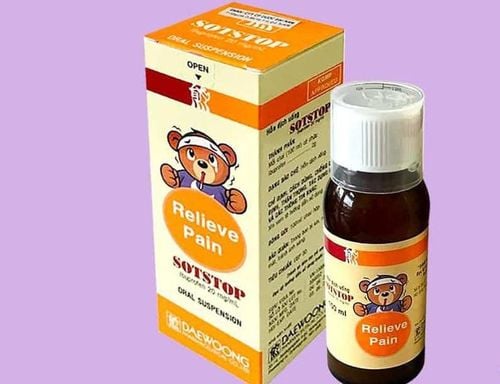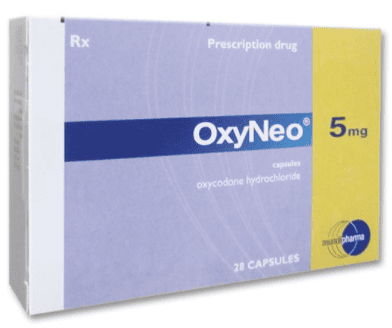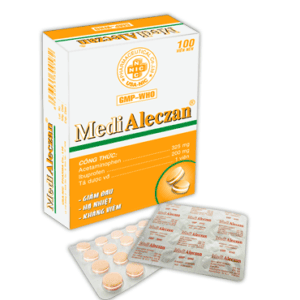This is an automatically translated article.
Niphadal is an analgesic and antipyretic, commonly indicated for the treatment of mild to moderate pain. So what are the uses and precautions when using the drug to get the maximum effect?1. What is Niphadal?
Niphadal contains Nefopam hydrochloride - which is a strong and fast acting non-narcotic pain reliever. Nefopam does not cause respiratory depression and may cause addiction. Niphadal is rapidly absorbed from the gastrointestinal tract, is 73% bound to plasma proteins, and reaches peak blood concentrations 1 to 3 hours after dosing. Finally, the drug is eliminated mainly via urine and feces.
2. Indications of the drug Niphadal
Niphadal is indicated in the following medical conditions
Acute and chronic pain of mild to moderate severity. Pain after surgery. Toothache. Musculoskeletal pain. Pain due to trauma. Pain in cancer. Primary dysmenorrhea.
3. Contraindications of Niphadal
Niphadal is not indicated for use in the following cases:
Allergy to Nefopam or any other ingredient of the drug. The patient has a history of convulsions, urinary retention, and angle-closure glaucoma. Patient is taking MAOIs. Children under 12 years of age are not indicated for taking Niphadal. Note when using Niphadal:
Prolonged use of Niphadal can cause the risk of drug dependence. When treatment with morphine-containing drugs is discontinued in patients with Niphadal dependence, the patient is at risk of a withdrawal syndrome. Monitor liver and kidney function before and during drug administration in patients with liver and kidney failure. Use caution in patients with cardiovascular disease, myocardial infarction, because Niphadal accelerates the heart rate. Niphadal is a cholinergic antagonist so the benefits should be weighed before use in the elderly. There are no adequate studies on the safety of the fetus and child, so risk factors should be considered before administering Niphadal to pregnant and lactating women.
4. Niphadal drug interactions
Do not combine Niphadal and monoamine oxidase inhibitors (MAO). Concomitant use of tricyclic antidepressants increases the risk of seizures in patients. Alcohol and foods containing alcohol can increase side effects on the central nervous system when taken with Niphadal. Antimuscarinic drugs, sympathomimetic-like drugs, sedatives,... will increase unwanted symptoms when used concurrently with Niphadal.
5. Dosage and usage
How to use:
Niphadal is made in the form of oral capsules. Patients take the drug during or after a meal to avoid stomach irritation (food does not change the metabolism of the drug).
Dosage in adults:
Usual dose: 1 tablet (30mg)/time x 3-4 times/day. In severe pain cases, the dose can be up to 90 mg/time. Maximum dose: 300mg/24 hours.
6. Niphadal side effects
Some unwanted effects that may occur when using Niphadal include:
Common side effects:
Drowsiness, headache, dizziness. Increased heart rate, palpitations, chest pain. Nausea, vomiting, dry mouth. Urinary retention. Sweating. Rare side effects:
Excitability, restlessness, hallucinations. Drug dependence syndrome. Convulsions . Anaphylactoid reactions, Quincke's edema, urticaria. Blurry vision, somnolence. In summary, Niphadal is a mandatory prescription drug, used to treat symptoms of acute or chronic pain. The drug is fast and strong, but it also causes some unwanted side effects, especially drug dependence. Therefore, the use of the drug must be strictly according to the prescription of the specialist for the time and dose. Patients absolutely must not buy Niphadal for home use on their own.













